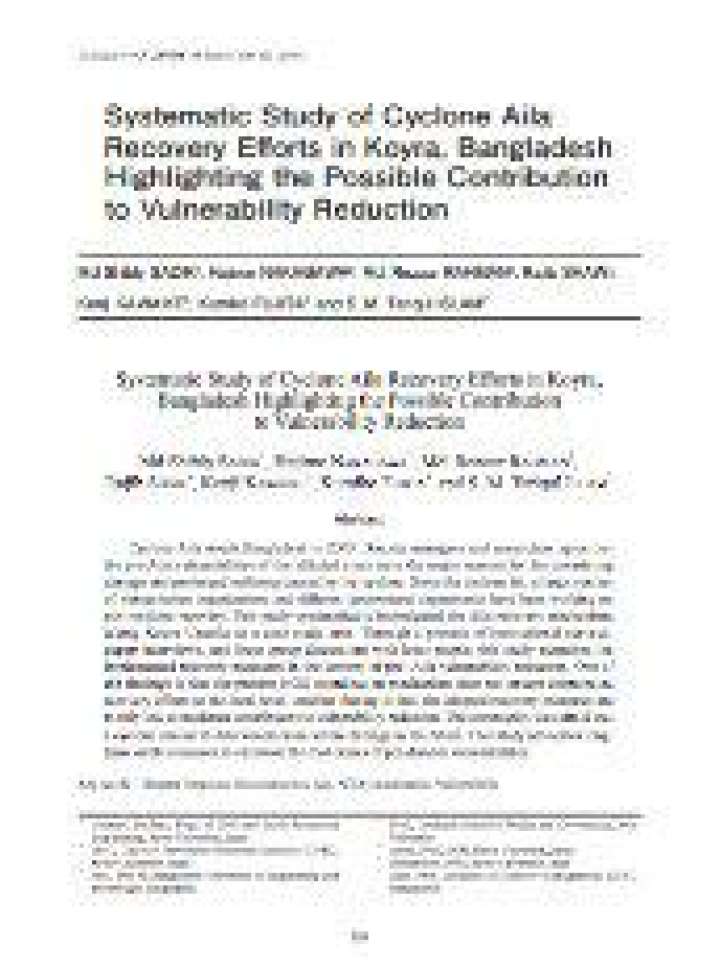Systematic study of Cyclone Aila recovery efforts in Koyra, Bangladesh: Highlighting the possible contribution to vulnerability reduction
Cyclone Aila struck Bangladesh in 2009. Disaster managers and researchers agree that the pre-Aila vulnerabilities of the affected areas were the major reasons for the devastating damage and prolonged suffering caused by the cyclone. Since the cyclone hit, a large number of humanitarian organizations and different government departments have been working on post-cyclone recovery.
This study systematically investigated the Aila recovery mechanism, taking Koyra Upazila as a case study area. Through a process of institutional surveys, expert interviews, and focus group discussions with local people, this study examined the implemented recovery measures in the context of pre-Aila vulnerability reduction. One of the findings is that the present NGO coordination mechanism does not ensure coordinated recovery efforts at the local level. Another finding is that, the adopted recovery measures are mostly low to moderate contributors to vulnerability reduction. The community was afraid that a cyclone similar to Aila would cause severe damage in the future. This study advocates longterm viable measures to eliminate the root causes of pre-disaster vulnerabilities.
